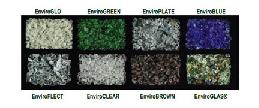
Researchers at the University of Minnesota have developed a much faster and convenient method to convert biomass directly into a mixture of gases that can be burned to generate electricity or made into liquid fuels such as diesel.
The process is not too complicated – Millimeter sized particles of biomass enter a chamber with a 700-800 °C porous surface, on entering the biomass is instantaneously converted into a mix of gases. This mix then interacts with a catalyst made from rhodium that facilitates partial oxidation reactions converting the mixture of gases called syngas or synthetic gas into hydrogen and carbon monoxide. These gases can be burned to run turbines generating electricity or can also be converted to more valuable liquid fuels such as diesel.
The system is so fast that it reduces biomass in just 70 milliseconds – a rate ten times faster than other conventionally employed methods. The technique is used to make smaller reactors for converting waste biomass to syngas, which could help meet one of the most significant challenges of producing fuels from biomass. This will also reduce the amount of money spend in transporting biomass long distances to their processing plants.
The overall cost-effectiveness of the system depends on whether rhodium, which sells for around $6,000 an ounce, can be used in small enough amounts and last over long enough periods. These researchers also have to scale up the process that can be used to produce more fuel. The best would happen if these researchers are able to replace rhodium with some cheaper and more easily available substances.
Via: TechnologyReview




